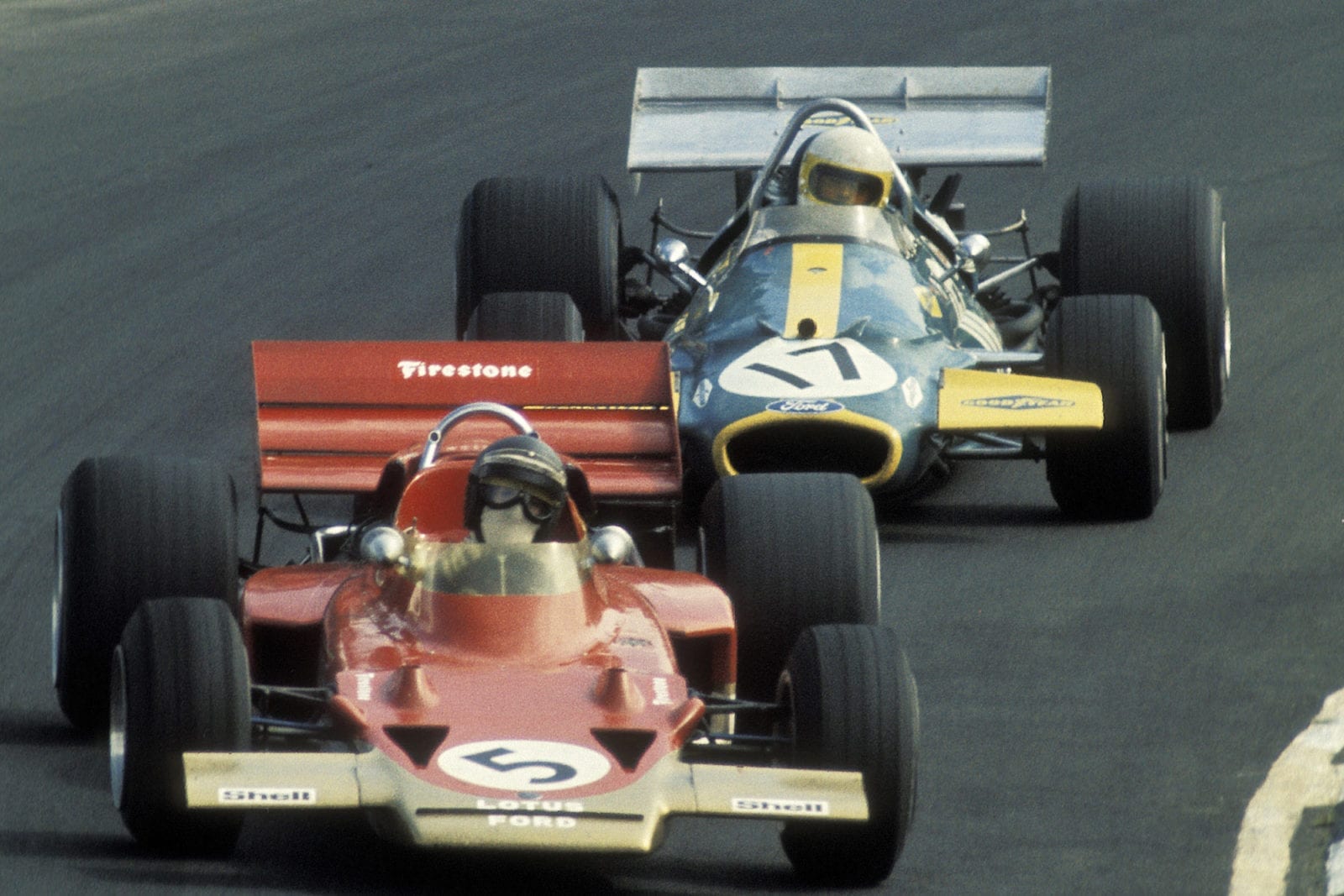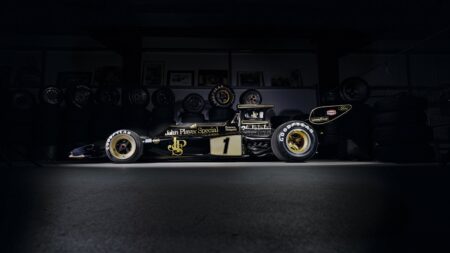That drove the key feature of the car: moving the radiators from the conventional nose position to the sides. Aero and mechanical gains followed. The 72 had 65 per cent of its weight on the rear axle. Conventional front-rad cars had no more than 60 per cent. With no radiators to house, the nose could be made a wedge, Lotus had found gains from the design in its 56 Indycar. Modern CFD proves the 72’s nose created ground effect.
With no radiators up front, there was space to bring the brakes inboard, improving aero and reducing the unsprung mass. The lighter load on the front axle meant Firestone could develop a special two-ply front tyre. Softer compounds could be used, without overheating. Once the ill-conceived anti-dive and anti-squat geometry was removed from the suspension, the 72 was ready to win.



